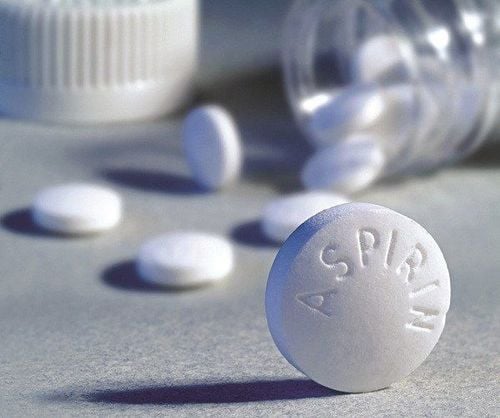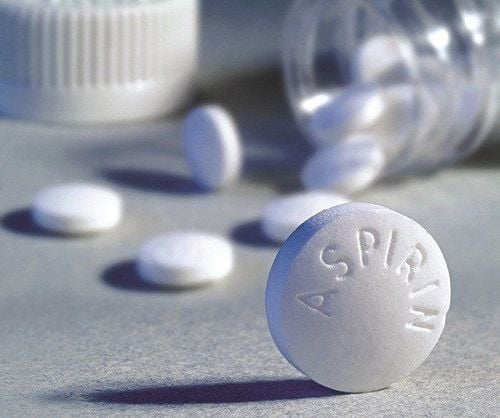This is an automatically translated article.
The article was professionally consulted by Specialist Doctor II Nguyen Quoc Viet - Interventional Cardiologist - Department of Examination & Internal Medicine - Vinmec Danang International HospitalCurrent situation, the rate of people suffering from diseases related to peripheral artery disease is increasing. But most patients are not detected in time because most of these diseases do not show specific symptoms. The disease can be detected by doing a pulse wave velocity test.
1. What is peripheral artery disease?
Peripheral artery disease is narrow or blocked arteries in the legs or arms. People with peripheral artery disease often present with peripheral circulatory failure, leg pain when walking (claudication) and an increased risk of heart attack and stroke.2. What is pulse wave propagation velocity measurement?
Pulse Wave Velocity (PWV) test is an indirect measurement of arterial stiffness over a segment of artery. It is measured using tonometers such as the Complior (Colson, Paris - France) and the SphygmoCor (PWV Medical PTY Limited, Sydney - Australia). The propagation time was measured by two tonometers placed on the peripheral circuit and the distance between them was estimated by measuring directly on the skin surface. This estimate is approximate unless the artery between the two measurement points lies in a straight line. This is quite difficult to measure especially in the case of obese people.

Contraction of the left ventricle pushes blood into the ascending aorta, dilating the aortic wall and creating a pulse pressure wave. The generated pulse waves propagate to the peripheral vessels at different rates, depending on the arterial segment. In people with stiff arteries, pulse waves propagate faster. Circuit pressure wave propagation velocity is based on wave propagation model.
The determinants of pulse wave propagation velocity (PWV) are the elastic properties of the arterial wall and the morphology of the arteries, as well as the blood viscosity. Moëns-Korteweg introduces a definite PWV equation as follows:
PWV = √[(E. h) / (2r.ρ)] where E is Young's modulus of elasticity, h is the wall thickness, r is the radius and ρ is the density of blood (1.05 for blood).
PWV can also be calculated by measuring the propagation time of the circuit wave and the distance between two measuring points. Therefore, measuring arterial PWV is a simple and reproducible method. PWV is calculated using the following formula:
PWV = Distance/Δt (m/s). Where: Δt = propagation time.
The pulse propagation time is the time delay between the proximal pulse wave and the distal pulse wave as determined by foot-to-foot measurement. The pulse wave legs are the point of the minimum diastolic pressure or the upward stroke of the systolic pressure of the pulse wave. However, determining the exact leg of the circuit wave is quite difficult when analyzing manually.
The distance between two recording points is measured on the body surface with a tape measure. This distance measurement is not the correct distance the circuit wave travels, just an estimate. In this way, it is possible to overestimate the propagation distance in obese individuals and underestimate it in patients with tortuous aorta.
3. Location of pulse wave propagation velocity measurement
rotator cuff PWV, from carotid to radial; Fetal-tibial PWV, from the common femoral artery to the tibial artery; Carotid-femoral PWV, from carotid to common femoral artery; Brachial-ankle PWV, from brachial artery to tibial artery.
4. Measurement of carotid-femoral wave propagation velocity
This is considered the "gold standard" for measuring arterial stiffness.Carotid-femoral wave propagation velocity measurement has been shown to be an independent predictor of morbidity and mortality from cardiovascular disease in the general population, hypertensive patients, patients with end-stage renal failure, and the elderly.
In 2007, the European Society of Hypertension/European Society of Cardiology considered carotid-femoral pulse wave velocity measurement as a clinical parameter for cardiovascular risk stratification in hypertensive patients. . However, the interpretation of data from different PWV measurement methods should be considered carefully, since the length of the circuit wave propagation distance depends on the measurement method. Furthermore, there are many physiological factors that influence PWV.
Factors affecting pulse wave propagation velocity measurement
Pulse wave propagation velocity measurement depends on blood pressure. Hypertension increases PWV. Increased heart rate also increased PWV. Age also contributes to an increase in PWV. This association was independent of blood pressure and other cardiovascular risk factors. The pulse wave velocity and ABI test is a rapid, noninvasive test that screens for the risk of peripheral artery disease. Therefore, when prescribed, the patient should follow the doctor's instructions to get the best results.
Vinmec International General Hospital is a general hospital with the function of examining, treating and recovering many diseases with modern medical equipment accompanied with quality medical services, a team of doctors Professional and experienced doctors will bring the best treatment results for customers.
Please dial HOTLINE for more information or register for an appointment HERE. Download MyVinmec app to make appointments faster and to manage your bookings easily.














